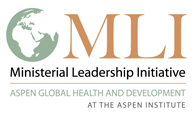Less talk, more do on capacity building for development
Photo Credit Dominic Chavez |
As originally seen at Huffington Post
Imagine that a country is in fact in the driver's seat of a car, driving up the development road.
A country's capacity is its ability to drive along that road, navigating around bumps in its way, accelerating and stopping as necessary, and changing direction in the face of a roadblock. A country should always be in the driver's seat, making decisions as they arise -- no one knows a road like a local citizen. Helping countries as they learn to drive that road is the goal of capacity building, and one of many goals that were discussed at the recent Fourth High Level Forum on Aid Effectiveness in Busan.
Strengthening capacity is particularly crucial as aid budgets are under threat by broader spending cuts, and each dollar spent must yield the maximum value possible. Moreover, as developing countries' incomes grow, the aid that they receive now should help lay a strong foundation for the future, when they might be able to fund many of their own public programs. These goals are critical, but progress in meeting them has fallen short of the mark. Evaluations of donors' progress in advancing their aid effectiveness commitments have called for new strategies to strengthen country capacity.
Although high level commitments are essential to ensuring support for effective aid, the trick is in how individual projects are carried out. The Results for Development Institute (R4D) has been testing ways to do capacity building, learning about what technical experts can do to support policymakers and other in-country leaders who are driving important reforms and changes forward.
R4D's experiences focus on countries with some established public sector capacity, but they suggest that there are some important elements of an aid program's design that deserve close attention. These elements include being country-driven, using flexible and tailored approaches, and using peer-to-peer learning opportunities.
-Country-driven. "Country-driven" is a common phrase in the aid community, but if you take it apart and look at what that means in practice and how to make programmatic choices that complement it, the elements of capacity building start to fall into place. In partnerships like the Ministerial Leadership Initiative for Global Health (MLI) and the Transparency and Accountability Program, an application or request process where country leaders lay out their own goals and plans for achieving them is a good first step in discovering countries' own priorities. Once a program is underway, supporting local actors (either within government or civil society) to manage day-to-day decision-making is a natural way to ensure that these priorities are met.
Continue this article at Huffington Post
Keyword Search
MLI works with ministries of health to advance country ownership and leadership. This blog covers issues affecting the ministries and the people they serve.
Connect with Us
![]()
![]()
Categories
Blogs We Like
- Africa Can End Poverty
- Africa Governance Initiative
- Behind the Numbers
- CapacityPlus
- Center for Global Health R&D Policy Assessment
- Center for Global Development: Global Health Policy
- Center for Health Market Innovations
- Global Health
- Global Health Hub
- Global Health Impact
- The New Security Beat
- PAI Blog
- RH Reality Check
- Save the Children
- Transparency and Accountability Program
Contact Us
Please direct all inquiries to
